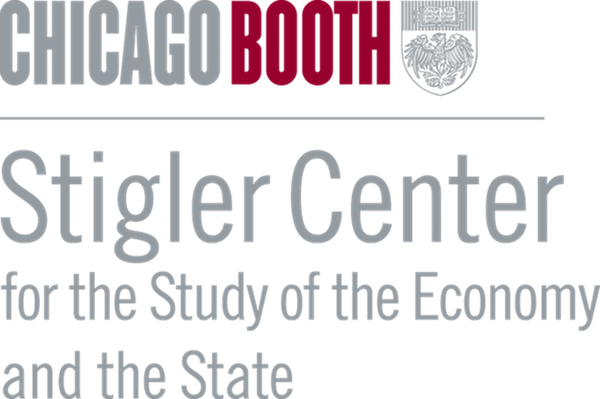In new research, Seong Jin Ahn, Jared N. Jennings, and Yanrong Jia find that SEC enforcement against insider trading does not deter subsequent insider trading so much as displace it to other actors in the same industry.
The United States Congress requires the Securities and Exchange Commission (SEC) to deter market manipulation, such as insider trading, which it achieves through calibrated remedies for harmful behavior. As the SEC stated in its 2015 annual report regarding insider trading, rigorous enforcement actions send “a strong message of deterrence to would-be violators.” Despite the SEC’s commitment to fair markets and combating illegal opportunistic trading, the public has witnessed numerous high-profile insider trading cases over the decades, which questions the effectiveness of SEC enforcement actions targeting insider trading. In a recent working paper, we provide evidence that SEC enforcement actions do not deter insider trading. Instead, they displace it to other firms within the same industry due to insiders’ expectations that the agency does not have the resources to pursue multiple cases within the same industry within a short period of time.
Prior research suggests that SEC enforcement actions impact the expected costs of opportunistic insider trading. Robert Davidson and Christo Pirinsky find that SEC enforcement actions deter the colleagues of insiders under investigation by the SEC from pursuing opportunistic trading. This is consistent with these non-targeted insiders (employees who have not yet engaged in manipulative behavior) revising upward the expected risk of engaging in manipulative behavior.
Despite some evidence of deterrence, the media and academics continue to question the effectiveness of SEC enforcement. Some research suggests that resource constraints may hinder the SEC’s ability to fully execute an enforcement strategy that effectively deters misconduct. For example, when an SEC regional office has a heavy backlog of investigations from the previous quarter, it is less likely to pursue investigations in the current quarter. Similarly, when a regional office is busy with heavy backlogs from the previous quarter, the SEC tends to pursue more easily identified cases, such as those with negative press coverage. Lauren Cohen, Christopher Malloy, and Lukasz Pomorski provide evidence that insiders execute fewer non-routine trades following periods when the SEC allocates additional resources to enforcement. However, because Congress sets the SEC’s budget at the beginning of the fiscal year and that budget is relatively inelastic during the year, the SEC is limited in its ability to adapt to changes or trends in misconduct observed through the year.
The material constraints on the SEC means it only has the budget and personnel to pursue so many cases in a given year. If the SEC has already announced several large investigations earlier in the fiscal year, it has fewer resources to pursue new cases for the rest of the year, reducing the risk for other insiders. In other words, SEC enforcement actions may not necessarily deter market manipulation so much as shift its timing and incentivize different insiders to participate who may not have otherwise. The crime prevention literature calls this shifting of misconduct from one group to another a “balloon effect” or “displacement effect.” Vivian Fang, Nan Li, Wenyu Wang, and Gaoqing Zhang provide theoretical evidence that non-targeted firms subject to less regulatory scrutiny are more likely to commit fraud after observing the targets of a resource-constrained regulator, which creates a “whack-a-mole” equilibrium across firms to explain the “everlasting fraud” phenomenon.
How different groups of non-targeted insiders update beliefs about the expected costs of opportunistic trading depends on the observed pattern in SEC enforcement actions (i.e., the SEC’s enforcement strategy). For example, if the SEC repeatedly targets a specific industry in a given year and moves on to another industry in the next year, then we might expect insiders at non-targeted firms within the same industry to execute fewer illegal trades while the SEC focuses on the industry. However, if the SEC spreads enforcement actions across many industries in a given year but does not repeatedly target a single industry, then non-targeted insiders may infer that the likelihood of being targeted by the SEC decreases after observing an enforcement action within their industry. In summary, limited resources and an inelastic budget may result in the SEC effectively deterring one group from misconduct but ineffectively deterring another. Therefore, finding that SEC enforcement actions increase the cost of opportunistic trading for one insider group does not suggest that enforcement actions deter illegal behavior for other groups.
We study this possible relationship between enforcement and displacement by reviewing historical SEC enforcement strategies to calculate how non-targeted insiders might update their expected costs of opportunistic trading after observing an enforcement action. Between 2001 and 2019, we find that 90% of the industries targeted by the SEC for employee insider trading are targeted only once a year, which suggests that the SEC does not typically target multiple firms within the same industry in a single year. That is, the likelihood of the SEC engaging in repeated enforcement actions against insiders at two different firms within the same industry in a single year is low. Therefore, when resources are limited and inelastic, we expect non-targeted insiders employed by industry peers to temporarily revise the cost of opportunistic trading downward.
Indeed, we find that when the SEC announces an enforcement action in a given industry, non-targeted insiders at peer firms increase the total value of the shares they trade by 13% (relative to the sample mean) just prior to their firm’s earnings announcement. We also examine the direction of the trades relative to the earnings announcement news and find that non-targeted insiders sell more shares just prior to the upcoming earnings announcement containing negative news, which we measure using the change in operating income. These findings suggest that non-targeted insiders at peer firms are more likely to exploit non-public information to profit from insider trading after an SEC enforcement action announcement.
The SEC has stated its desire to deter misconduct. Our evidence suggests that the SEC may not effectively deter opportunistic insider trading, at least at an industry level, through its current enforcement actions. In the past, the SEC has adopted the “broken windows” approach, which is an enforcement strategy that focuses on small violations and lower-profile violators. Former Chair Mary Jo White said that “even the smallest infractions have victims, and that the smallest infractions are very often just the first step toward bigger ones down the road… minor violations that are overlooked or ignored can feed bigger ones, and, perhaps more importantly, can foster a culture where laws are increasingly treated as toothless guidelines.” The SEC cannot prevent all infractions, and perhaps it considers today’s levels of insider trading to be acceptable given its constraints. Nevertheless, it is important for the SEC to be aware that unless it seriously expands its enforcement strategy, its actions do not so much deter opportunistic insider trading as displace it to other actors.
Board directors and shareholders may also be interested in our findings. Even though cross-sectional results suggest that non-C-Suite management (e.g., board members and managing directors) are driving the results, these upper-management employees are still classified by the SEC as “Section 16” officers and are obligated by fiduciary duty to disclose relevant information to shareholders and refrain from informed trading. Our results indicate that some corporate insiders at non-targeted firms breach their fiduciary duty by engaging in opportunistic trading after observing SEC enforcement in the industry. Prior research suggests that financial misconduct tends to spread within a firm, as coworkers can influence each other’s propensity to engage in similar behavior. Neglecting the unethical behavior of employees may foster more serious misconduct.
In short, our evidence that the SEC displaces rather than deters opportunistic insider trading underscores the challenges of enforcement. Acknowledging these displacement effects may be crucial if the SEC wishes to craft a more nuanced approach to its enforcement strategy.
Articles represent the opinions of their writers, not necessarily those of the University of Chicago, the Booth School of Business, or its faculty.






